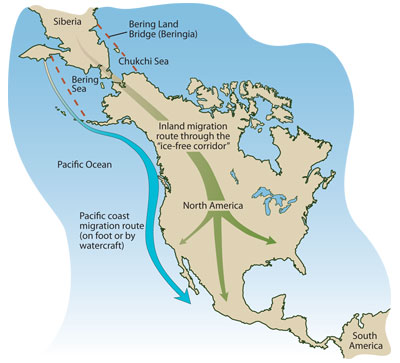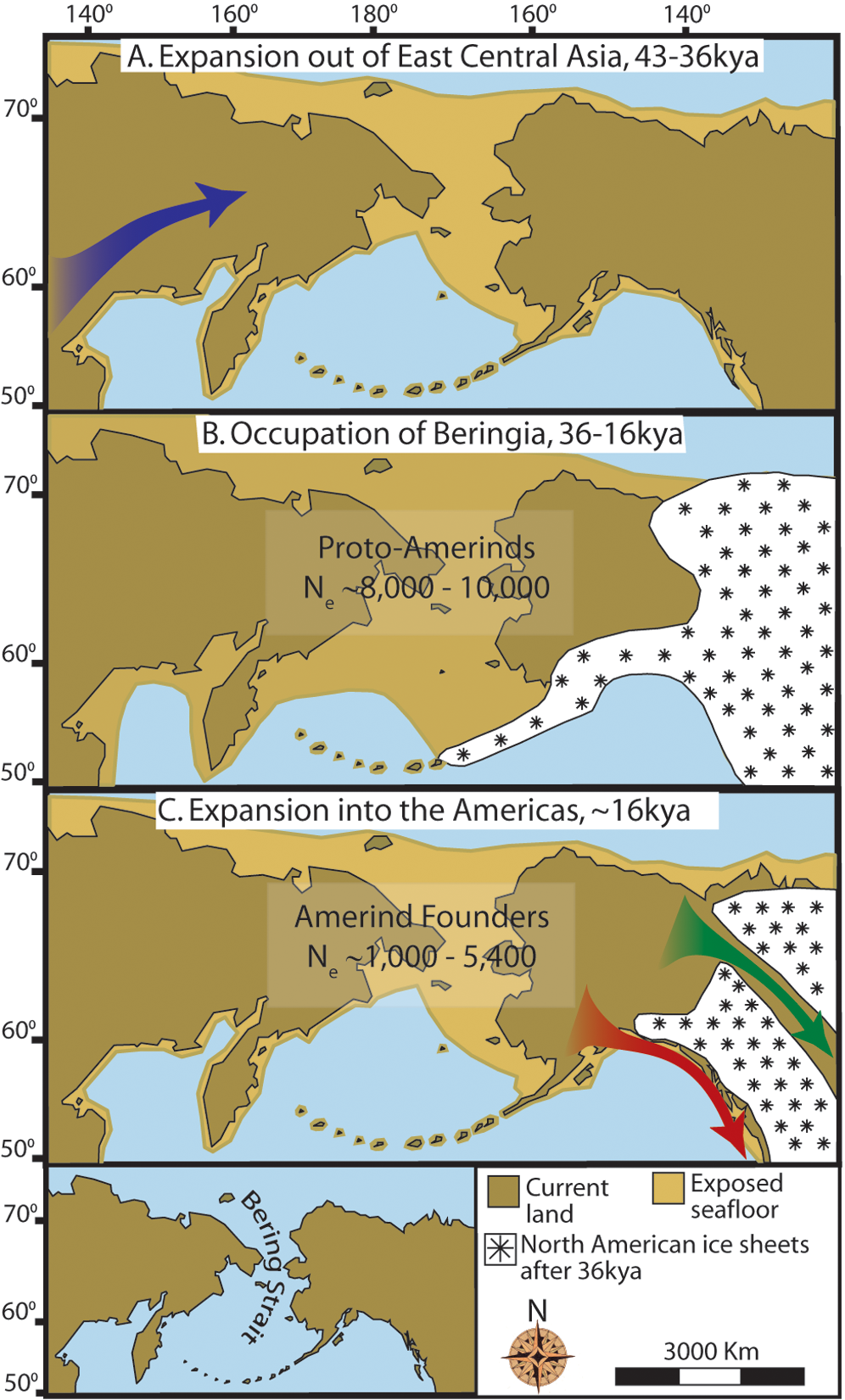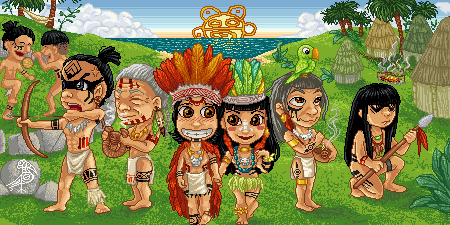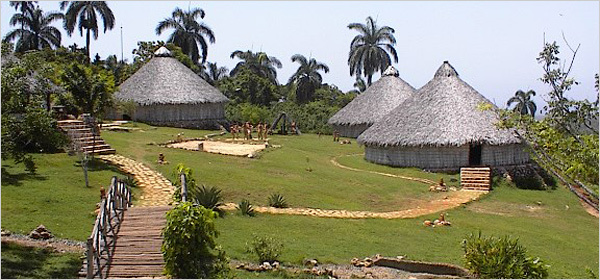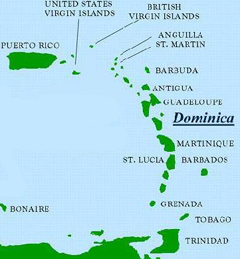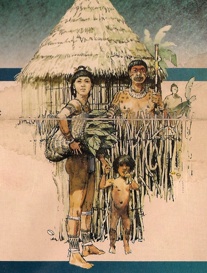Caribbean History
Indigenous people of the Americas
The indigenous people were the first inhabitants in the Americas based on historical data. It means they are natives or the first inhabitants of the area. These people were nomads. Nomads are people who roam from place to place in search of food.
How did they reach here?
The first human beings to
arrive in the Americas were known as the Amerindians. It meant American Indians
and it was the standard term for all of the indigenous people of the Americas.
The indigenous people came from Asia sometime between 25, 000 and 40, 000 years
ago (Indigenous-being a member of the
original inhabitants of a particular place).
First leg: The
Movement to America
The
first human beings to arrive in the Americas were known as the Amerindians. It
meant American Indians and it was the standard term for all of the indigenous
people of the Americas (Indigenous-being a member of the
original inhabitants of a particular place). During this period the Ice Age
exist and approximately 1/3 of the earth’s surface was covered with ice or
glaciers. Between 20, 000 and 40, 000 years ago, the indigenous people started
the journey to the Americas from Mongolia. The indigenous people were nomads. It means people who move from
place to place in search of food.
Second Leg:
Settlement in North America
The
Amerindians migrated because of the shortage of food because they were mainly
hunters. As a result, they begin to follow herds of mastodon, prehistoric deer
and buffalo. They arrived in the Americas by means of a land or an ice bridge
which connects Asia (Siberia) with North America (Alaska). This was called the Beringia. Today, it is known as the Bering Strait. By 9000 B.C., Some the indigenous people
migrated east in the cold sub-arctic regions to today North America and Canada.
Some of the groups include Iroquois and Sioux.
Third Leg: The Great Travel
Others moved south and
south-east into warmer areas, eventually some reach areas in Central and South
America in about 20, 000 B.C. Still continuing on the route (Route-course or
way taken to reach a particular destination). Some of these places were Mexico,
Honduras, Belize, Guatemala, Venezuela, Guianas and Amazon River Basin. The
conditions and resources found in Mesoamerica (that is the area between Mexico
and the North part Honduras) were very favourable to the building of a
civilization (A civilization is a complex society which characterized by
technology, government and culture). As the condition became suitable for
establishing a civilization, the indigenous people no longer were Hunters but
Hunter-gatherers, farmers and fishermen. Some of the indigenous group of people
that settled in Central America was the Aztecs (Northern Mexico) and Mayans
(Yucatan Peninsula).
Fourth Leg: The
Caribbean
Around 4000 BC more
advanced groups of Amerindians continued to South America. Some of the people
when to settle in the Tropical Lowlands of South America (Amazon Rainforest)
while another group settled in the Andes Mountains. The Incas went to settle in
the Andes Mountains in Peru. While on the other hand, the Tainos and the
Kalinagos settle in the tropical lowlands of South America which is known as
the Orinoco Basin. Later, they moved into the Caribbean through Trinidad and
continue migrating to the Greater Antilles (Migration-is the act of leaving one
place to settle in another area). The Kalinagos occupied the Lesser Antilles
except Trinidad which they share with the Tainos. The Tainos occupied the
Greater Antilles especially countries such as Jamaica, Cuba, Hispaniola, Puerto
Rico etc. (Settlement- it is the act of settling or living within a particular
area of a country, region or state).
Theories: Ice Bridge or Land Bridge?
The Indigenous people
crossed by means of the land and Ice Bridge which connected Siberia and Alaska
at the time in the area of what is now the Bering
Strait. Presently, two arguments are given for why the indigenous people
migrated to the Americas. Both arguments are based on the belief that a mass of
Asian people crossed either a land bridge or an ice bridge.
a. The first argument is
that 25, 000 years ago, what we call the Bering Strait was above sea level and
formed the Beringia land bridge. Then 25, 000 years ago during the Ice Age
people from the area now know Mongolia in the Northeastern Asia, crossed the
Beringia land bridge from Siberia into the landmassat Alaska. It is believed
that they were either fleeing the icy conditions or they were chasing hears of
deer on they survived.
b. The second argument is
that there was no land bridge 25,000 years ago but that there was an ice bridge
between Siberia and Alaska. This argument says that the Asians crossed this
bridge and followed the corridor between the Alaskan and Canadian mountains
into the Canadian plains, pushing south to the very end of the continent.
Settlement in North America, Central America, South America and the Caribbean
Some the indigenous
people migrated east in the cold sub-arctic regions. Others moved south and
south-east into warmer areas, eventually some reach areas in Central and South
America in about 20, 000 B.C. Some of these places were Mexico, Honduras,
Belize, Guatemala, Venezuela, Guianas and Amazon River Basin. Later, some group
moved into the Caribbean basin to settle such as Lesser and Greater Antilles.
The first people Amerindians to settle in the Caribbean islands seem to have
been primitive groups who lived by gathering plants and hunting animals for
food.
Around 1000 BC more advanced groups of Amerindians began to replace the
former settlers in the tropical lowlands of South America which is known as the
Orinoco Basin. These soon moved into Trinidad, and then passed through the
Lesser Antilles without settling (Settlement- it is the act of settling or
living within a particular area of a country, region or state), to colonize the
Greater Antilles.
 The Tainos migrated in a
north-easterly direction to Venezuela and then into the Lesser Antilles, moving
up the chains of islands until they entered the Greater Antilles. The Kalinagos
followed the rivers, Xingu and Tapajoz across Brazil, northwards to the Amazon
where one group moved east and eventually reached the coast of the Guianas,
while another group crossed the Amazon River, and followed its tributaries, Rio
Negro and Rio Bronco, to the north, reaching the valley of the Orinico from
which they drove out the Tainos/Arawaks.
The Tainos migrated in a
north-easterly direction to Venezuela and then into the Lesser Antilles, moving
up the chains of islands until they entered the Greater Antilles. The Kalinagos
followed the rivers, Xingu and Tapajoz across Brazil, northwards to the Amazon
where one group moved east and eventually reached the coast of the Guianas,
while another group crossed the Amazon River, and followed its tributaries, Rio
Negro and Rio Bronco, to the north, reaching the valley of the Orinico from
which they drove out the Tainos/Arawaks.
Amerindians in the Caribbean
South
American Home of the Tainos and the Kalinagos
The Tainos and the
Kalinagos originally lived in South America. The Tainos probably occupied
almost all the northern part of South America, as far as the lower parts of the
Andes Mountains which is somewhere between Bolivia, Peru and Brazil. The
Kalinagos on the other hand, probably lived on lands between the Amazon and
Guiana’s, and round Matto Grasso and the Brazilian Plateau, east of the Arawak
settlements, and further south than these settlements.
Migratory
routes of the Tainos and Kalinagos
 The Tainos migrated in a
north-easterly direction to Venezuela and then into the Lesser Antilles, moving
up the chains of islands until they entered the Greater Antilles. The Kalinagos
followed the rivers, Xingu and Tapajoz across Brazil, northwards to the Amazon
where one group moved east and eventually reached the coast of the Guianas,
while another group crossed the Amazon River, and followed its tributaries, Rio
Negro and Rio Bronco, to the north, reaching the valley of the Orinico from
which they drove out the Tainos/Arawaks.
The Tainos migrated in a
north-easterly direction to Venezuela and then into the Lesser Antilles, moving
up the chains of islands until they entered the Greater Antilles. The Kalinagos
followed the rivers, Xingu and Tapajoz across Brazil, northwards to the Amazon
where one group moved east and eventually reached the coast of the Guianas,
while another group crossed the Amazon River, and followed its tributaries, Rio
Negro and Rio Bronco, to the north, reaching the valley of the Orinico from
which they drove out the Tainos/Arawaks.
The latter group of Kalinagos
eventually arrived at the Gulf of Paria from where they took to the sea. They
moved up the chain of the Leeward Islands, pushing out the Arawaks. The Tainos
in Trinidad resisted the Kalinagos, and so continued to occupy all but the
north-western part of that island, which the Kalinagos occupied. By the time
the Spanish had arrived, the Kalinagos had reached eastern Puerto Rico.
Why did the Indigenous People migrate from South America to the Caribbean?
a.
Migration was an integral part of their
culture; a practice cultivated and passed on by their ancestors. (Nomad-Loved
Travelling)
b.
The
population had outgrown the available food resources in their homeland, and it
was becoming difficult to feed everyone, so there was a need to find new
settlements. This was so because (i) after centuries of cultivation, the soil
quality (of their homeland) was poor, so food production declined rapidly and
change in climatic conditions might have affected food supplies negatively.
c.
Resources used for creating shelter had
been exhausted so there was a need to find new resources. (New Supplies)
d.
Changes in climatic conditions may have
adversely affected their health, so there was the need to find new supplies.
e.
The Amerindians were a seafaring people;
they were good sailors and boat builders who used the sea for fishing, trading,
finding food, as well as for recreational purposes.They could have naturally
discovered any one of the islands on one of their expeditions, and to opt to
migrate there on the premise that it was ideal for creation of settlements. The
presence of favourable climate conditions, manageable vegetation (jungles were
not as dense as those in other areas) and the absence of any evidence of
dangerous animals might have also contributed to their decision settle the
islands.
f.
The Tainos might have seen the islands as
a place of refuge from the warlike Kalinagos who were pushing northwards into
their territory from areas located across the borders of modern Brazil and
Bolivia.The Kalinagos were
warlike, so they might have migrated in search of new targets/prey, or in
pursuit of the Tainos.
Tainos
The Tainos were peaceful
agriculturists and craftsmen, and they also did fishing and hunting. They
cultivated corn, cassava, pumpkins, sweet potatoes and yams. They wove cotton
cloth, made hammocks, vessels of pottery, tools such as knives and axes, out of
stone, ornaments of gold and shell.
Appearance
The Tainos had an olive brown skin, medium built, flat foreheads, long black straight hair with a short fringe and small dark beady eyes. They were short in statue and painted their bodies in black, white or red paint and wore a great deal of ornaments in their ears, nose and body. For instance, gold were usually used as plugs or hanging ornaments. The Cacique (Chiefs) had more ornaments than the others, made of gold or an alloy of gold and copper called guanin by the Tainos.
 Flattening of the forehead was a sign of beauty. At birth, the newly born babies had their skulls bound between two boards so that they grew up with high elongated heads. This may have been to thicken the skull so that it could stand up to heavy blows. As a result, their appearance will display a broad nose and their nostrils were probably flared. They wore a Zemi around their neck and feathers in their hair especially on special occasions.
Flattening of the forehead was a sign of beauty. At birth, the newly born babies had their skulls bound between two boards so that they grew up with high elongated heads. This may have been to thicken the skull so that it could stand up to heavy blows. As a result, their appearance will display a broad nose and their nostrils were probably flared. They wore a Zemi around their neck and feathers in their hair especially on special occasions. Clay and fat were mixed to create a bright coloured dye which was painted on the Tainos bodies. Besides being colourful, the clay and grease kept insects and rain. Small amulet, or charms, were carried in sacks round the neck, and others made from clay, shell and cotton were woven into the hair.
Tainos communities
Tainos communities were small, although a few had more than a thousand houses and could be classed as large villages. Usually the villages are located on a hill, near a river, ocean and grasslands. They often chose sites on the top of hills as a precaution against surprise attack. The houses of the typical Arawak/Taino village contained a flat court in the
center of the village which was used for ball games and various
festivals, both religious and secular. Houses were around this court.
The Tainos had two type of house. The bohio was the chief's house. It was rectangular in shape and larger than the other houses in the village. The bohio usually contain more than one rooms. The other house was the Caneye. The Caneye is a family house. The Caneye was circular in shape and hold up to 200 to 300 persons. The houses were strongly built and sometimes withstood hurricanes.
 |
| Caneye (Left) and Bohio (Right) |
The Tainos Political Structure
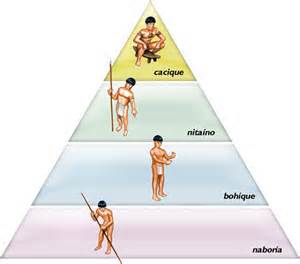 |
| The hierarchy shows how the Tainos Goverment was organized. |
The Kalinagos
 |
| The Map of South America above showing the area where the Kalinagos originated from. It is also the home of the Mainland Kalinagos. |
The Kalinagos originally
lived in South America. The Kalinagos settled to the east of the mainland
Arawaks between the Amazon and the Guianas. The origin was in the jungles
around the Orinoco river Basin. From around 1200 AD, the Kalinagos began to
move into the Orinoco homeland of the mainland Arawaks.
 |
| Kalinagos hunts near the Orinoco River, Venezuela, South America. Because the Kalinagos lived so closed the river, they develop the lifestyle of fishing. |
By nature they were
more aggressive than the Tainos. The Kalinagos took over the mainland Arawaks and
then they followed the Taino into the Caribbean. Eventually, they went raiding
Taino settlements killing the men and enslaving the women as well as settling
in the Taino village.
By 1492, the Kalinagos had settled in the Lesser Antilles
apart from Barbados and the northwestern parts of Trinidad. Kalinagos occupied
the islands of the eastern Caribbean. Some of the islands were Antigua, Dominica,
Guadeloupe, Martinique, Monserrat, Nevis, St. Lucia, St. Kitts and St. Vincent.
In addition, they started making raids on the Greater Antilles which
contributed to them settling in eastern part of Puerto Rico.
The Kalinagos settled near the coasts too. This is mainly because they were what we can call sea rovers. The sea was like a highway to them. They used it to get to and from the various islands of the
Greater and Lesser Antilles where they conducted their raids. They were also excellent fishermen.
Reasons why the Kalinagos migrated to the
Caribbean
1.
The Kalinagos were in the pursuit of new lands.
2.
The
Kalinagos were also in chase of the Arawaks.
Kalinagos Appearance
Kalinagos Appearance
The
Kalinagos were taller than the Tainos but still was at medium height and had a
light brown complexion. The Kalinagos usually went naked. The Kalinagos had
long, straight black hair which they combed and dressed with oil. They had a
complete absence of body hair.
They were also stronger than the Tainos due to
the emphasis placed on training and fighting. They had similar features like
the Tainos and these were, flattening the head of babies while the babies is on
their mother’s breast. This may have been because Caribs frequently carry off
Taino women in raids and they continued their practice.
Both men and women
painted their bodies with a red dye called Roucou. The men wore ornaments
around their arms and legs as well as jewellery through through their lips and
nose. One of such was the caracoli. It was a necklace of small bones and teeth
of victims, from which a crescent-shaped ornament was suspended. The women wore
rassada, a bracelet around their arms and legs.
How the Kalinagos dress and fashion is similar to that
of today’s Jamaicans?
History Classes
9N
9E1
9E2
History Classes
9N
9E1
9E2

